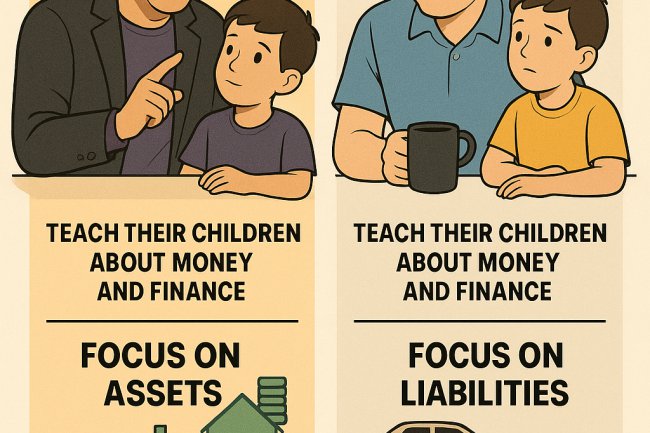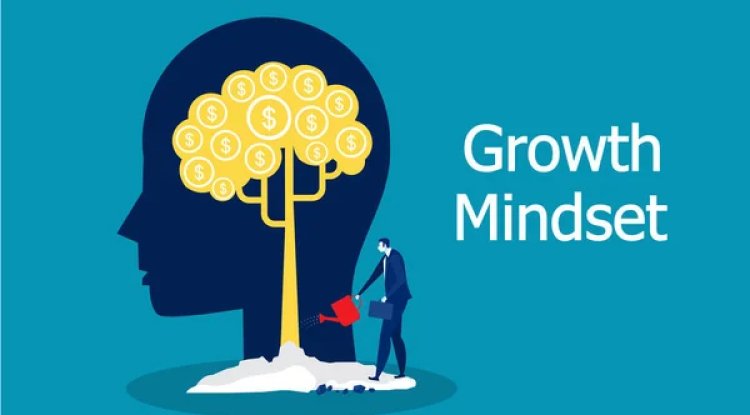Financial Planning: Your Roadmap to Wealth Building and Security
Financial planning is the key to long-term stability, wealth creation, and peace of mind. This guide breaks down the essential pillars—budgeting, saving, investing, debt management, and retirement planning—offering actionable tips, local tools, and digital solutions that anyone in Kenya or across Africa can start using today.

Introduction: What is Financial Planning and Why It Matters
Financial planning is the process of evaluating your current finances, setting money goals, and mapping out how to achieve them. In simple terms, a financial plan outlines where you are now, where you want to go (buying a home, educating children, retirement, etc.), and how you will get there. This roadmap helps you set priorities, meet obligations, save money regularly, and build wealth toward a secure future. Having a sound financial plan is especially important because it can reduce or even eliminate money-related stress by preparing you for responsibilities and unexpected emergencies.
In emerging economies like Kenya – where the cost of living has been rising and economic challenges can be significant – financial planning is a crucial tool for stability. It guides how you budget what you earn, save for emergencies, invest for growth, manage debts, and prepare for retirement, ensuring that each shilling works toward your life goals. Think of it as taking control of your money instead of letting money control you. The sections below break down the key components of financial planning and provide practical tips, with a focus on strategies relevant to Kenya and similar markets.
Budgeting: The Foundation of Financial Planning
Budgeting is the foundation of any solid financial plan. It means creating a clear plan for how you will spend and save your income each month. A budget helps you manage your income wisely to ensure you are saving and investing wisely while still enjoying your hard-earned money mindfully. By tracking your earnings and expenses, you gain insight into where your money goes and can align your spending with your priorities. In other words, budgeting prevents you from living beyond your means and frees up money for your goals.
One popular budgeting approach is the 50-30-20 rule, which divides your after-tax income into three buckets: 50% for needs, 30% for wants, and 20% for savings (and debt repayment). “Needs” include essentials like housing, food, transport, and utilities; “wants” are nice-to-have extras like dining out or entertainment; and “savings” includes building an emergency fund, investing, or paying down debt. This simple rule-of-thumb ensures you cover necessities, enjoy life in moderation, and still put aside money for the future. Of course, you can adjust the percentages based on your situation, but the core idea is to pay yourself (via savings) first before splurging on non-essentials.
Practical Budgeting Tips: Achieving a balanced budget in practice takes discipline. Here are some tips to get started:
-
Track Every Expense: For at least a month, record all your spending – from rent and groceries to that cup of coffee. Use a notebook, spreadsheet, or a budgeting app to categorize expenses. This will reveal your spending patterns and highlight where you can cut back.
-
Differentiate Needs vs. Wants: Clearly distinguish essential expenses (e.g. rent, food, school fees) from discretionary spending. If money is tight, the wants are the first area to trim.
-
Use Budgeting Tools: Leverage technology to stay organized. There are many budgeting apps that can simplify tracking. For example, Monefy, Money Lover, or PesaManager are user-friendly apps popular in Kenya that help monitor expenses and budgets. Even mobile money platforms like M-Pesa and bank apps (e.g. MySafaricom app) now include features to view transactions or set spending limits. Such tools can send alerts and give visual summaries of your spending, making it easier to stick to your budget.
-
Plan for Irregular Income: If you have seasonal or commission-based income (common in businesses or farming), build your budget around the minimum you expect to earn and save extra during good months. In Kenya, about 20% of adults have two or more income sources as a way to smooth out earnings volatility – if you’re one of them, budget conservatively and use surplus income to pay debts or save for leaner times.
-
Review and Adjust Regularly: Life is dynamic – prices change, and so do our needs. Set aside time each month to review your budget versus actual spending. If you consistently overspend in one category, adjust the amounts or find ways to cut costs. A budget isn’t static; it should evolve with your circumstances.
By mastering budgeting, you lay the groundwork for all other aspects of financial planning. It’s much easier to save, invest, or clear debts when you know exactly how much money is coming in and going out each month.
Saving: Securing Your Future and Building Resilience
Saving is all about setting aside a portion of today’s income for tomorrow’s needs. While budgeting deals with daily money decisions, saving focuses on preparing for short-term needs and unexpected events, as well as building funds for future goals. The first priority in saving is to create an emergency fund – a safety net of cash reserved for true emergencies like medical bills, urgent repairs, or loss of income. Financial experts recommend accumulating enough to cover at least 3–6 months’ worth of living expenses in your emergency fund, and even more if possible. This may sound like a lot, but you can build it gradually with small, regular deposits. An emergency fund ensures that a surprise expense (or a pandemic, job loss, etc.) doesn’t completely derail your finances or force you into debt.
Beyond emergencies, people save for various short- and medium-term goals: buying a phone or car, paying school fees, starting a small business, or simply having a cushion for opportunities that arise. Having clear goals can motivate you to save consistently. For example, if your goal is to buy land in five years, figure out how much you need to save monthly and treat that like a non-negotiable expense in your budget. Automating your savings can help – set up a standing order or use mobile banking to automatically transfer a portion of your salary into a separate savings account whenever you get paid. This “pay yourself first” approach ensures you save before you feel the temptation to spend the money.
Tailored Saving Strategies for Kenya: In Kenya and many emerging economies, there are unique ways and tools to encourage a saving habit:
-
Leverage Mobile Money and Banking Services: Kenya is famous for its mobile money revolution. As of 2024, over 86% of Kenyan adults use mobile money services for everyday transactions, which means almost everyone has access to basic financial services through their phone. Take advantage of services like M-Shwari or KCB M-Pesa, which let you save money through M-Pesa and even earn some interest. These digital savings accounts often have low or no minimum balance, making them accessible for anyone with even a few shillings to spare. Depositing your loose change or small daily amounts into a mobile savings pocket can accumulate significant funds over time.
-
Join a Chama or Savings Group: Community savings groups – locally known as chamas (also called merry-go-rounds or ROSCAs) – are a popular informal tool for saving and borrowing. In fact, about 7.6 million Kenyan adults use informal savings groups, which is even more than the number of Kenyans with formal pensions or insurance. In a chama, members contribute a set amount regularly and take turns getting the lump sum, or the group pools funds for joint investments. This not only instills discipline (peer pressure ensures you keep contributing) but also provides a way to access larger amounts of money when your turn comes or to take a loan from the group fund. If you struggle to save on your own, joining a well-run chama can be a great motivator and support system.
-
Use Fixed Deposit and Money Market Accounts: For larger savings or longer-term goals within a year or two, consider fixed deposit accounts or Money Market Funds (MMFs) offered by investment firms and banks. Money market funds have become one of the most popular investment options in Kenya due to their stability and competitive returns. They invest in low-risk short-term instruments and currently offer around 8%–11% annual returns in 2025, significantly higher than the typical bank savings account interest. Many money market funds allow starting with as little as Ksh 500 or 1,000 and can be accessed via mobile apps or online, making them convenient for regular folks. Parking your savings in such an account means your money earns interest and keeps ahead of inflation, while still being relatively safe and easy to withdraw when needed.
Remember that saving is a mindset. It might require some sacrifices – like eating out less or delaying the purchase of the latest smartphone – but the peace of mind and freedom that come from having savings are worth it. Start with whatever amount you can, and increase gradually. Even in tough economic times, prioritize paying yourself first. The goal is to make saving a habit, not a one-time effort.
Investing: Growing Your Wealth
If saving is about safety and short-term needs, investing is about growth and building wealth over the long term. When you invest, you put your money into assets like stocks, bonds, real estate, or businesses with the expectation that it will earn a return – either through income (interest, dividends, rent) or by appreciating in value over time. Investing lets your money work for you, ideally outpacing inflation and increasing your net worth. However, it comes with higher risk than regular saving; the value of investments can go up and down, and there’s a chance of loss.
It’s important to understand the difference between saving and investing. Saving typically yields lower returns but virtually no risk (for example, cash in a bank or a government bond), whereas investing offers the potential for higher returns but with some risk of loss. Both are essential: you save to protect yourself and have liquidity, and you invest to grow your wealth and reach big goals like buying a home or retiring comfortably. A smart financial plan will strike a balance between the two, based on your goals and your comfort with risk (your risk tolerance). For instance, you might keep an emergency fund in a savings account, but invest your additional long-term savings in a mix of assets that can grow over years.
How to start investing? First, only invest money that you won’t need in the immediate future – because investments need time to grow and can fluctuate in the short term. Next, consider diversifying: spread your investments across different types of assets to reduce risk. In practice, this could mean: some money in a savings or money market fund, some in stocks or equity funds, maybe some in a Sacco deposit or bonds, etc. Diversification ensures that if one investment performs poorly, it doesn’t ruin your entire portfolio. For example, if you invest in the stock market, you might buy shares of companies in different industries, or better yet use a unit trust or mutual fund that pools many stocks – that way, you’re not putting all your eggs in one basket. As your investments grow, regularly review and rebalance them if needed (for instance, if one asset grows a lot and now makes up too much of your portfolio, you might sell some and invest in others to maintain balance).
Local Investment Opportunities and Tips: Kenya offers numerous investment avenues suitable for beginners and seasoned investors alike, many of which are now easily accessible:
-
Unit Trusts and Mutual Funds: These are professionally managed investment funds that pool money from many people to invest in stocks, bonds, or other assets. A common starting point is a Money Market Fund (as discussed earlier) for stability. There are also Balanced Funds or Equity Funds that invest in the Nairobi Securities Exchange (NSE) and international markets. They allow you to start with small amounts and leave the stock-picking to experts. Always check that the fund is licensed by the Capital Markets Authority (CMA) for safety.
-
Stocks and Bonds: Investing directly in shares of companies on the NSE or buying government bonds is another way to grow wealth. Government bonds in Kenya can now be purchased through mobile platforms (like the earlier M-Akiba bond initiative which allowed Kenyans to invest in treasury bonds via M-Pesa in small denominations). Government bonds tend to be low-risk and offer a fixed interest return, while stocks are higher risk but can give higher returns or dividends if the companies perform well. If you’re new, consider starting with less volatile options or get advice from a licensed stockbroker or investment advisor.
-
Real Estate and SACCOs: Many Kenyans aspire to invest in land or rental property – real estate can be a good investment as it often appreciates and can generate rental income, but it requires substantial capital and comes with expenses (maintenance, taxes). Another accessible route is through Savings and Credit Cooperative Organizations (SACCOs). When you save in a SACCO, your deposits earn dividends (often better than bank interest) and you become eligible for affordable loans (usually up to 3x your savings). SACCOs essentially let you invest in a community bank of sorts and are very popular for goals like buying land or a car, because members can borrow against their savings at reasonable rates.
-
Fintech Investment Platforms: The fintech boom means there are new apps and platforms that make investing simpler. For example, robo-advisory apps like Ndovu provide goal-based investing solutions – you can input your goal (say, “I need Ksh 500,000 in 5 years for a project”) and the platform automates your savings into a portfolio of low-cost investments to help you reach that goal. Some apps allow Kenyans to invest in foreign stocks or ETFs (Exchange Traded Funds) with very small amounts, spreading out your opportunities globally. Always do some due diligence: ensure any app or platform you use is reputable and preferably regulated.
The key with investing is to start as early as possible, even with a small amount, and be consistent. Thanks to the power of compounding (earning returns on your returns), the sooner you start, the more your money can grow exponentially over time. For instance, investing Ksh 5,000 a month in an asset that earns an average 10% per year could grow to millions over a couple of decades. Finally, invest in what you understand – avoid putting money in something just because it sounds lucrative or because everyone is talking about it (for example, a hot stock tip or a cryptocurrency scheme) without understanding the risks. When in doubt, seek advice from a qualified financial advisor. Investing is a powerful wealth-building tool, but it should be done with knowledge and caution.
Debt Management: Keeping Debt Under Control
Managing debt is a critical component of financial planning, because high-interest debt can erode your savings and hinder you from achieving your goals. Debt management means developing a strategy to handle the money you owe – whether it’s student loans, a mortgage, a car loan, or credit card and mobile lending debts – in the most efficient way possible. In an ideal situation, you minimize debt and borrow only for things that bring long-term value (such as education, a home, or a business venture) rather than to fund day-to-day consumption. However, life doesn’t always go as planned, and many people do rely on loans to get by or to seize opportunities. The goal, then, is to avoid bad debt traps and ensure debt remains a manageable portion of your finances, not a growing burden.
In Kenya, the last decade has seen an explosion of quick digital loans – borrowing money via mobile phone apps or services. These loans are easy to get and convenient in a pinch, but often come with very high interest rates and short repayment periods. According to surveys, digital borrowers in Kenya took an estimated 25 million mobile loans in 2018 (about 8 loans per borrower on average). This shows how widespread and routine borrowing has become, but it also highlights the risk: it’s easy to fall into a cycle of debt if you’re taking loan after loan, sometimes even to repay previous debt. Many banks and fintech companies offer products like M-Shwari, KCB M-Pesa, Fuliza, Tala, and others that give quick credit – these can be helpful for emergencies, but if used improperly, they can lead to a debt spiral due to fees and interest.
Strategies for Smart Debt Management:
-
Know What You Owe: Make a list of all your debts, including the outstanding balance, interest rate, and monthly payments for each. This might include bank loans, SACCO loans, mobile loans, credit card balances, etc. Having the full picture is the first step toward taking control.
-
Prioritize High-Interest Debt: Not all debt is equal – some loans cost you more because of higher interest. It’s usually wise to focus on paying off the most expensive debt first. For example, a credit card charging 3% per month (which is ~36% APR) or a mobile loan with a flat fee that equates to an even higher annual rate should take priority over a low-interest student loan or a mortgage at single-digit interest. By paying more than the minimum on high-interest loans, you reduce the total interest you’ll pay and free up cash flow faster.
-
Consider the Snowball vs. Avalanche Methods: Two popular approaches to debt repayment are the debt snowball (paying off the smallest balances first to gain momentum and psychological wins) and the debt avalanche (paying off the highest interest rate debts first to save money). Choose the method that motivates you most – just have a plan to systematically clear debts one by one. For instance, if you have several digital loans, you might pay off the smallest one, then roll that payment into the next, and so on. Alternatively, tackle the one with the highest interest to get the biggest financial benefit. Either way, avoid taking new debt while you’re still heavy in existing debt – don’t borrow from Peter to pay Paul, as the saying goes.
-
Negotiate and Restructure if Needed: If you are truly struggling, talk to your lenders. Banks in Kenya may offer options to restructure loans (lengthening the term, for example) to reduce monthly payments. Some digital lenders also allow extensions at a fee. While extending a loan can increase the total interest you pay, it’s better than defaulting and ruining your credit record. Always communicate with your creditors; many will work with you if you show willingness to pay.
-
Use Debt for Growth, Not Consumption: Whenever possible, channel debt into activities that generate value. Taking an affordable loan to invest in a small business, a professional course, or an asset that appreciates can be worthwhile because it may increase your income or net worth in the long run. In contrast, using loans to fund a flashy lifestyle, betting, or non-essential consumption will set you back financially. A good question to ask is, “Will this debt pay for itself in the future or improve my financial position?” If not, think twice about taking it.
By actively managing your debt, you’ll improve your credit health and reduce financial stress. In Kenya, having a good credit history can even make borrowing cheaper in the future, since lenders and even mobile loan apps often give better terms to repeat borrowers who have a record of timely repayment. Moreover, every shilling you free up from debt repayments is one you can redirect to savings and investments. Remember, being debt-free (or in control of debt) is a key milestone on the road to financial freedom.
Retirement Planning: Building a Comfortable Nest Egg
Retirement may seem far away, especially for young people, but it is a critical part of financial planning. Retirement planning means preparing financially for the time when you will no longer be earning a regular income from work. The goal is to accumulate enough assets and savings during your working years so that you can maintain a comfortable lifestyle in your old age. In practical terms, this often involves contributing to a pension scheme, investing in long-term assets, or otherwise setting aside funds that you’ll draw on later in life. The sooner you start, the more time your money has to grow through compounding. Even small, regular contributions can snowball into a significant retirement fund over a few decades.
In many African countries like Kenya, there has traditionally been a reliance on family to support elders, or on the assumption that one’s children will take care of them. While family support is valuable, it’s wise not to solely count on it. Demographic and economic shifts mean that each generation has its own financial pressures, and you’ll want to avoid becoming a burden if possible. Unfortunately, only about 20% of Kenyans actively save for retirement, and even those who do often find that their savings may not be sufficient. According to pension surveys, a large portion of retirees deplete their pension lump sums within just a few years after leaving work, indicating that many people end up financially strained in their later years. Additionally, the government’s safety net – such as the National Social Security Fund (NSSF) – provides only a very modest pension that is unlikely to sustain one’s pre-retirement standard of living. (For context, Kenya’s pension penetration rate is around 20–26% and among the lowest in the region, which means the majority of the workforce has no formal pension coverage and must rely on personal savings or informal means for retirement income.)
Steps for Effective Retirement Planning:
-
Start Early and Contribute Regularly: Time is your best friend when saving for retirement. The earlier you begin setting aside money (even in your 20s), the more you benefit from compound interest. Make retirement savings a line in your budget – treat it like a “bill” you must pay to your future self. If your employer offers a pension plan or provident fund, contribute enough to get any matching contributions (that’s essentially free money). If you’re self-employed or your job has no pension, consider opening an individual retirement scheme with an insurance or investment company and contribute to it consistently.
-
Take Advantage of Tax Incentives: Many retirement contributions are tax-deductible or tax-deferred. In Kenya, contributions to registered pension schemes are tax-free up to certain limits, and the investment income in those funds is also tax-sheltered. This means you’re not just saving; you’re also reducing your tax burden each year. Utilize these incentives – they effectively boost your savings.
-
Invest for Growth: Money that you won’t touch for decades can be invested in assets with higher growth potential, since you have time to ride out short-term market fluctuations. Pension funds and retirement schemes typically invest in a mix of stocks, bonds, and property. You can adopt a similar approach if you manage your own retirement pot – for example, you might invest a chunk of your long-term savings in equity funds or even own rental property that will generate income in your old age. Ensure you diversify and adjust the investment strategy as you get closer to retirement (shifting to more stable options to protect what you’ve accumulated).
-
Plan for Life After Work: Think about the kind of retirement you want. Do you plan to continue some form of part-time work or business in retirement, or do you envision full leisure? Will you have financial obligations (like supporting dependents) even in old age? Such questions will inform how much you need to save. A common target is to aim for a retirement fund that can provide about 60-80% of your final working income annually, but individual needs vary. It can be useful to consult a financial planner or use online calculators to estimate your “retirement number.”
-
Avoid Raiding Your Retirement Savings: In times of need, you might be tempted to withdraw from your retirement fund (some schemes allow partial access when changing jobs, etc.). Try to resist this unless it’s truly a life-or-death emergency. Taking out retirement savings early not only diminishes your future fund, but you also lose the compounding growth on that amount. Protect it as much as possible.
Planning for retirement is essentially committing to take care of your future self. It may require sacrificing some spending now, but it is a gift of security and dignity in your later years. The freedom to choose whether or not to work when you’re older, and not to depend entirely on others, is priceless. No matter your age today, the best time to start planning for retirement was yesterday – the second best time is now.
Leveraging Financial Tools and Technology
One of the advantages of living in the modern age is the plethora of tools and platforms that can simplify financial planning. Technology has made it easier than ever to save, invest, budget, and learn about personal finance – often right from your smartphone. This is particularly transformative in Africa, where traditional banking services haven’t reached everyone but mobile phones have. Here are some tools and how they can help you take control of your finances:
-
Mobile Money & Online Banking: As mentioned, services like M-Pesa have revolutionized finance in Kenya. You can use mobile money not just to send payments but also to save in mobile banking products, borrow small loans, pay bills, and even buy insurance. With over 50% of Kenyans using mobile money daily, it’s a convenient platform to build good habits. For instance, you might set up an automatic daily transfer of Ksh 100 from your M-Pesa to M-Shwari savings – it’s small enough to manage, but that’s Ksh 3,000 saved in a month. Banks have also stepped up their game: most Kenyan banks (Equity, KCB, NCBA, Co-op, etc.) have robust mobile apps and USSD services that allow you to check balances, track transactions, and even set budgeting alerts. If you haven’t yet, download your bank’s app or use their USSD menus to monitor and manage your accounts more proactively.
-
Budgeting Apps and Expense Trackers: A variety of free and paid apps can help you stick to your budget. They often let you input your income and expenses, categorize spending, and visualize where your money goes with charts. As noted earlier, apps like Mint (a popular global app) or local solutions like PesaManager can link with your accounts or be manually updated to show you whether you’re on track with your spending plan. Some apps even send warnings when you’re nearing your budget limit in a category (say, groceries) or if a bill is due. If you prefer simplicity, even maintaining notes on your phone or using an Excel/Google Sheets template can do the job – the key is to consistently use a system.
-
Savings and Investment Platforms: Fintech platforms are making investing more accessible. We discussed robo-advisors like Ndovu, which provide guided investing. Additionally, there are micro-investment apps that allow you to invest spare change (rounding up your purchases and investing the difference), and others that let you buy government bonds or equities digitally. For example, brokerage apps now enable Kenyans to buy and sell stocks on the NSE from their phone, view live market prices, and track their portfolio easily. There are even apps that let you invest in U.S. stocks or cryptocurrencies with very small amounts – though those come with higher risk, so tread carefully and ensure you understand the products. The overarching trend is that you no longer need to have a lot of money or a personal broker to start investing; technology has lowered the barriers. Most money market funds and unit trusts in Kenya also offer mobile channels – you can sign up, deposit or withdraw funds, and check your investment balance through an app or WhatsApp in many cases. This convenience means you can respond quickly (e.g. invest immediately when you have extra cash, or check your balances anytime).
-
Financial Education Resources: Finally, the internet itself is an incredible tool. Websites like WealthInsights (the very site you’re reading), personal finance blogs, YouTube channels, and online courses can boost your financial literacy. Many are free or low-cost. Knowledge is power – the more you learn about budgeting, investing, or even advanced topics like taxes and insurance, the better decisions you can make. There are also online communities (on social media or forums) where people share tips on saving money, good investment opportunities, and personal success stories that can inspire you. Just remember to verify information and be cautious of scams; if someone online is promising guaranteed high returns or pressuring you to “join” an investment scheme, it’s likely too good to be true. Stick to learning from reputable sources and double-check advice with professionals if needed.
In summary, don’t hesitate to use technology to your advantage. Whether it’s setting up a simple auto-transfer, using an app to track your expenses, or starting an investment with a few taps, these tools can make financial planning less daunting and more effective. The African financial landscape is leaping ahead with digital solutions, and Kenya is at the forefront of this fintech wave – take advantage of this to propel your finances forward.
Conclusion: Take Charge of Your Financial Future
No matter your current income or financial situation, it’s never too early or too late to start planning for your financial future. Financial planning is not a one-time task but an ongoing journey. You might feel overwhelmed by all the advice – budgeting, saving, investing, managing debt, retirement – but remember that you can start with small steps. The key is to begin: draft a simple budget, open that savings account, or maybe download one finance app that can help you today. Each action you take is a building block towards greater financial stability.
Empower yourself by setting clear goals and reminding yourself why you’re doing this – whether it’s to give your family a better life, achieve a dream like buying a home, or simply to have peace of mind. Celebrate the milestones: your first investment, clearing a debt, hitting a savings target. There will be challenges along the way (economic downturns, personal setbacks, emergencies), but with a solid financial plan, you will be far better prepared to navigate them.
Finally, stay motivated and keep learning. Personal finance isn’t taught extensively in schools, so many of us have to educate ourselves. But with each new skill – be it negotiating a better deal, understanding a financial product, or sticking to a spending plan – you gain confidence. You realize that you are in control of your money, not the other way around. As you gain control, you’ll find more freedom to focus on what truly matters in your life, free from constant financial worry.
Call to Action: Take a moment right now and commit to one action that will kickstart (or improve) your financial plan. It could be as simple as writing down your top three financial goals, or as immediate as transferring a small amount to savings today. Do it, and then keep that momentum going tomorrow. Your future self will thank you. Remember, every shilling you save, every wise investment you make, and every debt you pay down is an investment in you and your dreams. Start now, stay the course, and take control of your financial destiny. You have the power to build the wealthy and secure life you envision – one decision at a time. Good luck on your journey to financial freedom!
What's Your Reaction?




















